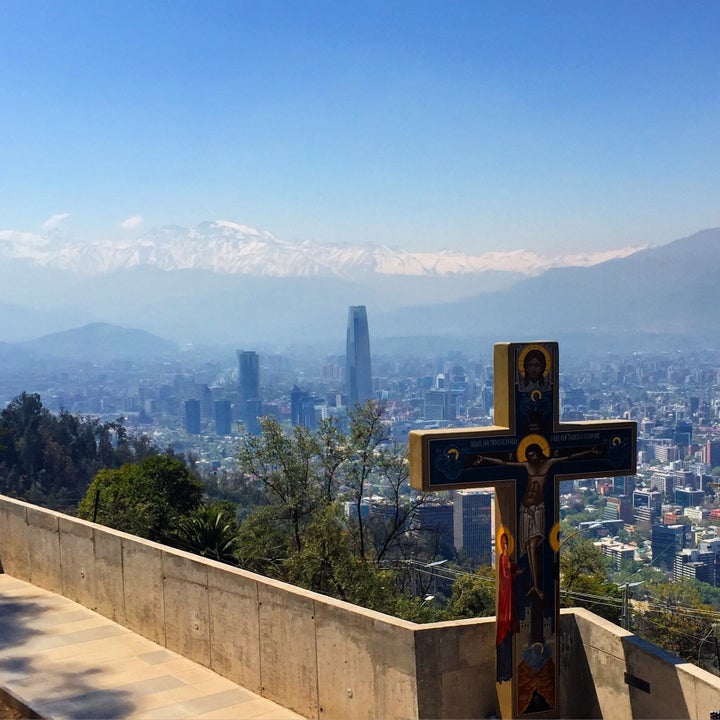
New York has the Statue of Liberty. Paris has the Eiffel Tower. Moscow has the St. Basil’s Cathedral. The site that lures tourists to Santiago, Chile? The city in its entirety.
Some may mistake Santiago as a stopover city. A city that provides none other than a central location to connect to more popular destinations nearby. In Chile, these include bucket list worthy destinations like the Atacama Desert in the north. The UNESCO World Heritage site of seaside Valparaiso to the west. The Andes mountains to the East. Patagonia in the south. Oh and of course, wine country only one or two hours in any direction from the bustling city.
For me, Santiago became the city that made me realize traveling for the place, not the site, is as an important of an experience to have as visiting any famous landmark across the map.
I lived in Santiago for three months. In my time living in this wonderfully unique South American city, it became clear that Santiago isn’t a typical tourist city. And it shouldn’t be seen as one.
It’s a place you go to learn. To immerse yourself. To get acquainted with South American city living. Often compared to Buenos Aires, Santiago is sprawling and constantly growing. It is modern at most and has its rundown areas as all cities do. But it’s a place to experience it all as a liveable city for the long term traveler.
The “Sanhattan” (Manhattan in Santiago) area of Las Condes is remarkably unexpected, boasting Latin America’s tallest building, the Costanera Center, with a five story shopping mall, as well as towering condominiums and the most luxurious hotel lines in the business.
On the opposite end of the spectrum, about 10 minutes outside of the city are suburban towns like Renca, still considered as part of Santiago, yet it lacks the amenities of the city and the stereotypical charm of suburban living. Electricity is a luxury and Chile’s frequent earthquakes still destroy these shanty-town neighborhoods, while the central-urban, modern structures can get away with minimal damage.
Yet it is in neighborhoods such as Providencia and Lastarria, in the midst of Santiago, where the middle class represents the balance of the two extremes; ideal for straying from the tourist experience to immersion living. It’s here where you’ll look around at the parks surrounding the towering apartment complexes, outdoor cafes attracting leisurely lunch-ers, business figures flocking to the metro and recognize a familiar, urban scene. Yet, listen and look a little closer to the babble of foreign tongue around you and signs for pharmacies, grocery stores and restaurants, abnormal to any Western world chain, quickly make you realize that you’re far from home, but in the best way.
So stay awhile. Plant some temporary roots and you will surely pick up Spanish, find the best pisco happy hour, get to know your favorite vendors at the open markets and most of all be able to direct visitors to your favorite places and make their tourist trip to Santiago more than just a stop over.
After a week of work, these became my favorite ways to spend a weekend afternoon:
- Galindo for a cheap pisco and delicious fish dish
- Boca Nariz for a high class wine tasting and pairing menu
- Lastarria neighborhood for souvenir shopping and cafe culture
- Barrio Italia for Santiago’s artsy, hip scene
- Skip the funicular and climb up San Cristobal (45 minutes)
- A chirimoya juice at the Tirsa Molina market
- Grab a sopapilla from any park vendor with spicy tomato sauce
- El Museo de Derechos Humanos for a perspective on Chile’s not so distant history (allow at least 3 hours)
- Patio Bellavista for occasional outdoor concerts
- Rent an apartment for short term lease (available from a couple days to a week to a month) in an attempt to adjust to local customs
- Buy fresh products at the markets and cook at your rental; afterall, produce is Chile’s majority export
Although nothing on this list seems to scream ‘famous attraction,’ that’s the point; it’s a list of past times. It was doing these, writing about these and living this life which confirmed to me - there are some cities you visit, simply to visit the most touristy destinations because it’s ‘once in a lifetime.’ And Santiago doesn’t have a singular site. It’s the city as a whole.
A unique city, where instead of going to simply check off a site from your bucket list, the city is your bucket list.